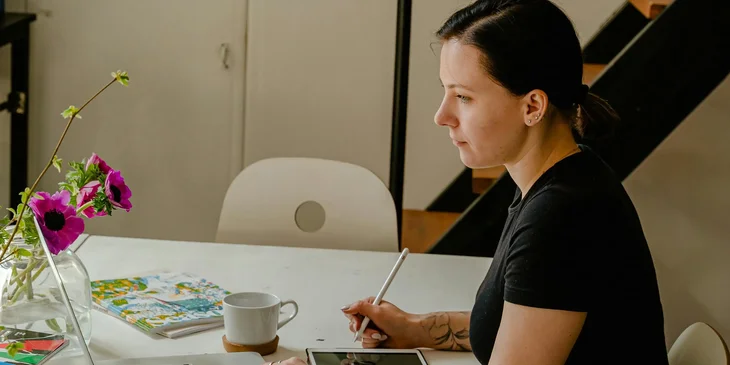Stories you may like
3D Artist
3D artists work in media production and use illustration and computer software programs to create original animations and graphics. A growing number of 3D artists work in medical illustration to create 3D images of anatomy for use in research and diagnostics. Fine 3D artists create sculptures using materials such as clay, wood, and metals.
We are looking for a creative individual to join our team as a 3D artist. The responsibilities of the 3D artist include creating still and moving images using computers, creating 3D models of products, and managing multiple projects while adhering to deadlines.
To be a successful 3D artist, you should be detail-oriented, flexible, and a good team player. Ultimately, a top-notch 3D artist is creative and artistic with a strong working knowledge of color, texture, and light as well as industry-standard software.
3D Artist Responsibilities:
- Using 3D modeling, texture, mapping, and other techniques to create graphics, visual effects, and animations.
- Collaborating with Animators and other artists and attending meetings to discuss ongoing projects.
- Understanding the project requirements and conceptualizing creative ideas.
- Creating storyboards to visualize scenes and create a realistic environment for movies, games, and other visual effects.
- Receiving feedback from directors, animators, designers, and clients, and editing your creations based on the comments received.
- Reviewing 3D arts and recommending improvements.
- Creating 3D sculpts and assets to meet artistic standards.
- Troubleshooting any problems that arise during work on a project.
- Meeting with clients, Designers, and Directors to discuss and review projects and deadlines.
3D Artist Requirements:
- Certificate, associate's degree, or bachelor's degree in graphic design or a related field.
- 3D artists in medical illustration must have a working knowledge of biology.
- A strong portfolio of previous work and completed projects.
- Strong working knowledge of industry-standard software, including 3ds Max, V-Ray, SketchUp, and Maya.
- Excellent creativity and artistic skills.
- An eye for composition, realism, texture, color, and lighting.
- Good communication and teamwork skills.
- Excellent time management skills.
- Willingness to remain up-to-date on the latest creative software and hardware.
How To Become A 3D Artist: Skills, Qualifications And Duties
A 3D artist works with computer software to digitally create three-dimensional characters, landscapes and visual effects. They play an important role in the video game, construction, entertainment, media and technology industries. By learning more about the profession, qualifications and duties of 3D artists, you can decide whether this is a suitable career choice for you. In this article, we discuss how to become a 3D artist, explore their skills and look at the average salary that 3D artists earn.
How To Become A 3D Artist
A 3D artist creates animations, visual effects and prototypes for a product or architectural design using various 3D visualisation, rendering and modelling software. They may work individually or with teams to conceptualise creatives, storyboards and conduct research, depending on the requirements of the project. 3D artists generally work closely with marketing, production and design teams.The following steps illustrate how you can become a 3D artist:
1. Complete your education
Not all employers require you to complete a degree in arts and design, but some do. Moreover, earning a degree helps as it builds a good design foundation. It also helps add value to your resume. You may look at colleges that offer programs in 3D animation, design, graphic design or game design. These courses teach 3D modelling, spatial proportions, colour theory, lighting, character development, storyboarding, scripting and animation.
2. Learn relevant tools and software
The minimum requirement to become a 3D artist is to understand and learn the various computer design software. You may use more than one software for a project, so choose a computer or laptop that supports a graphics card and has high processing power. You may also work on multiple projects and designs to learn the software. Additionally, understanding the software short keys may help you work faster.
3. Gain experience
Several industries require 3D artists. Gain experience in various fields to identify your niche in which you can specialise and grow. You may do this through internships with agencies or with independent 3D artists. These internships expose you to business trends, industry requirements and projects.
4. Prepare a digital portfolio
Create a website or use online portfolio builders to prepare a digital portfolio that showcases your skills and work and makes it accessible. Additionally, include descriptions detailing the objective of your work, your role in the entire project and its outcome. Consider putting a link to your digital portfolio on your resume so hiring managers can visit it to learn more about you and your abilities.
5. Create a resume
Along with your digital portfolio, you may also need to create a formal resume. You may include a website link or a scannable QR code in your resume for easy and instant access to your name, logo, contact information, website and digital portfolio. Additionally, add relevant skills and experiences gained in different fields.
6. Apply for jobs
Look for work using your network and online job portals. You may find jobs in various industries like media, advertising, medicine and architecture. Keeping your digital portfolio updated makes you stand out. Additionally, it makes an employer's life easier and boosts the chances of you landing your dream job.
Duties And Responsibilities Of A 3D Artist
A 3D artist plays an essential role in creative fields like advertising, film production, architecture and interior design, engineering and gaming. They create high-quality visuals for every project. The role of a 3D artist varies depending on the industry they work in. The duties and responsibilities of a 3D artist may include one or more of the following:
- Speak with clients and understand their requirements
- Brainstorm ideas and create storyboards for client approval
- Build three-dimensional elements of the project, including characters, landscapes and visual effects
- Conceptualise the design, colours, movement and interaction of all elements
- Research about the project for ideas and tools
- Collaborate with marketers, creative visualisers and content creators
- Use a combination of hand-drawings and computer software to create graphics
- Help conceptualise frameworks and processes for the project
- Receive feedback from stakeholders, including clients, directors or managers, and make the necessary changes
Tools For A 3D Artist
A 3D artist works with multiple computer software for a single project. They require tools for drawing, image editing, motion graphics and three-dimensional image rendering. These tools use computers with high processing power. Many 3D artists may use one or more of the following tools:
- Sketchup
- Fusion 360
- Cinema 4D
- 3ds Max
- Blender
- Mudbox
- Houdini
The Work Environment Of A 3D Artist
Being a 3D artist is an independent profession. Some 3D artists choose to be hired by a company, while others work on contracts. A 3D artist spends time researching design concepts, creating storyboards and designing graphics. Soon after finalising the storyboard and script, a 3D artist designs and renders the visuals with material, lighting, shadow and textures to make it look realistic.Since 3D artists work in diverse fields, some may choose to specialise in a particular medium like gaming, television and films or in specific areas of the design process like creating characters, storyboarding, scripting and layout design. 3D artists work for defined hours during the week but may work for longer hours depending on priorities and deadlines. The job of a 3D artist is highly demanding and requires being up-to-date with the latest tools and techniques to grow in the field.






User's Comments
No comments there.